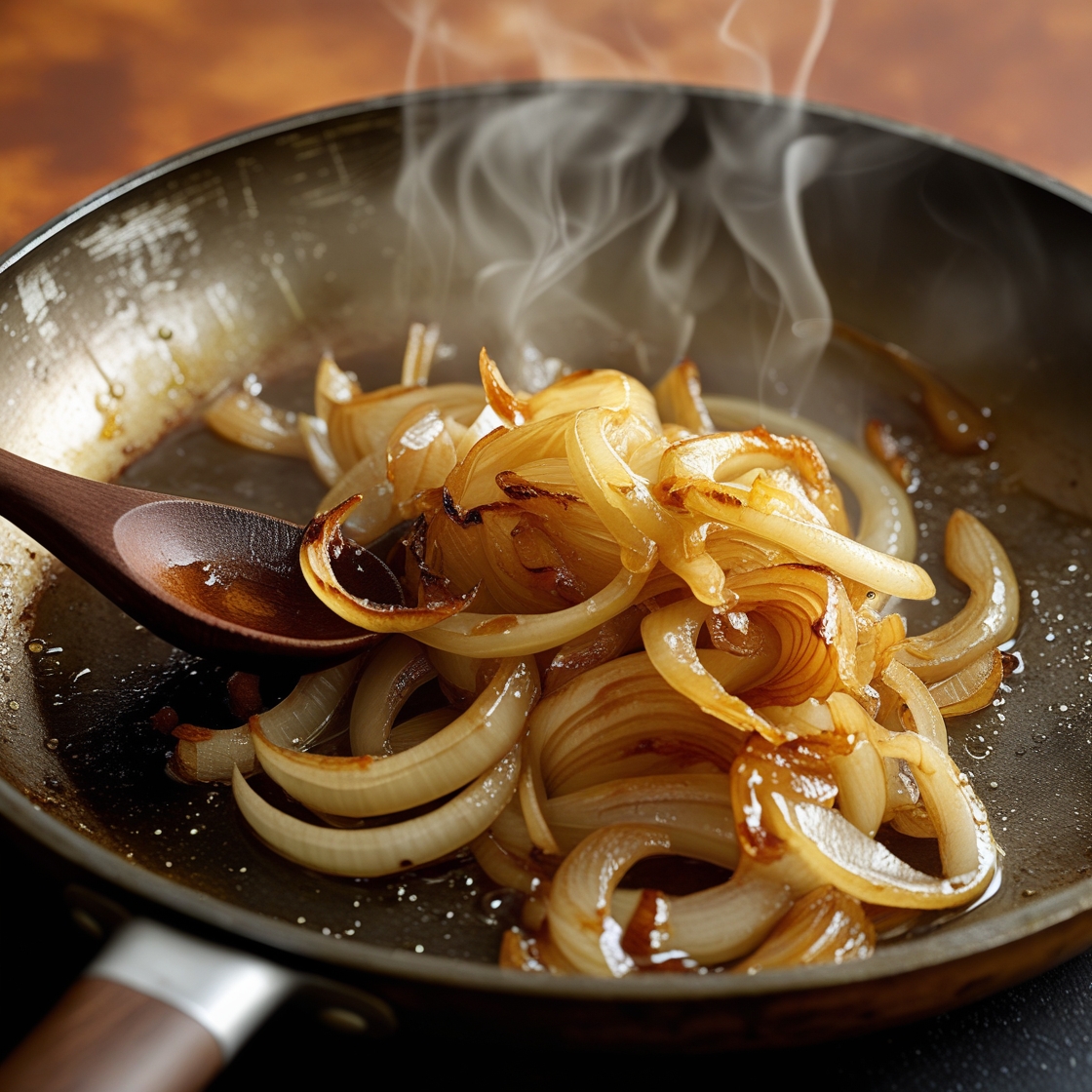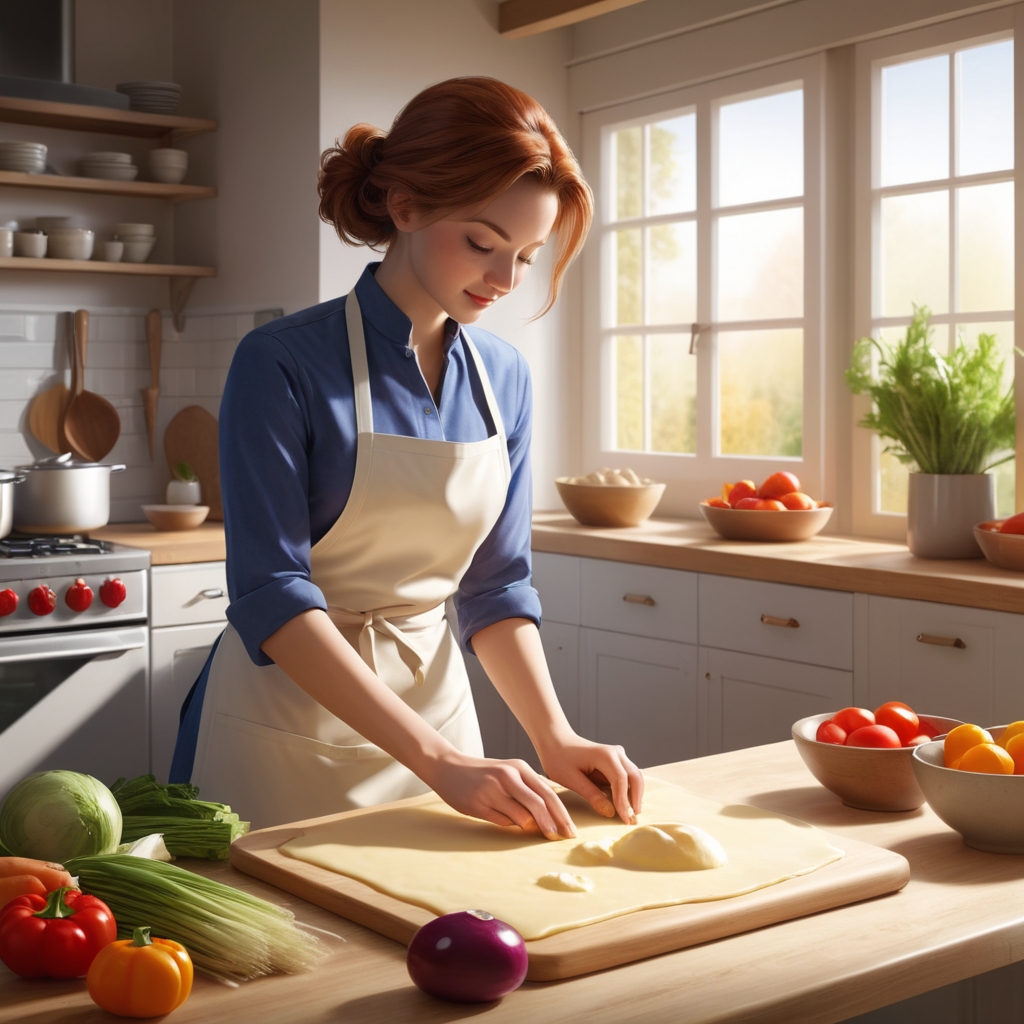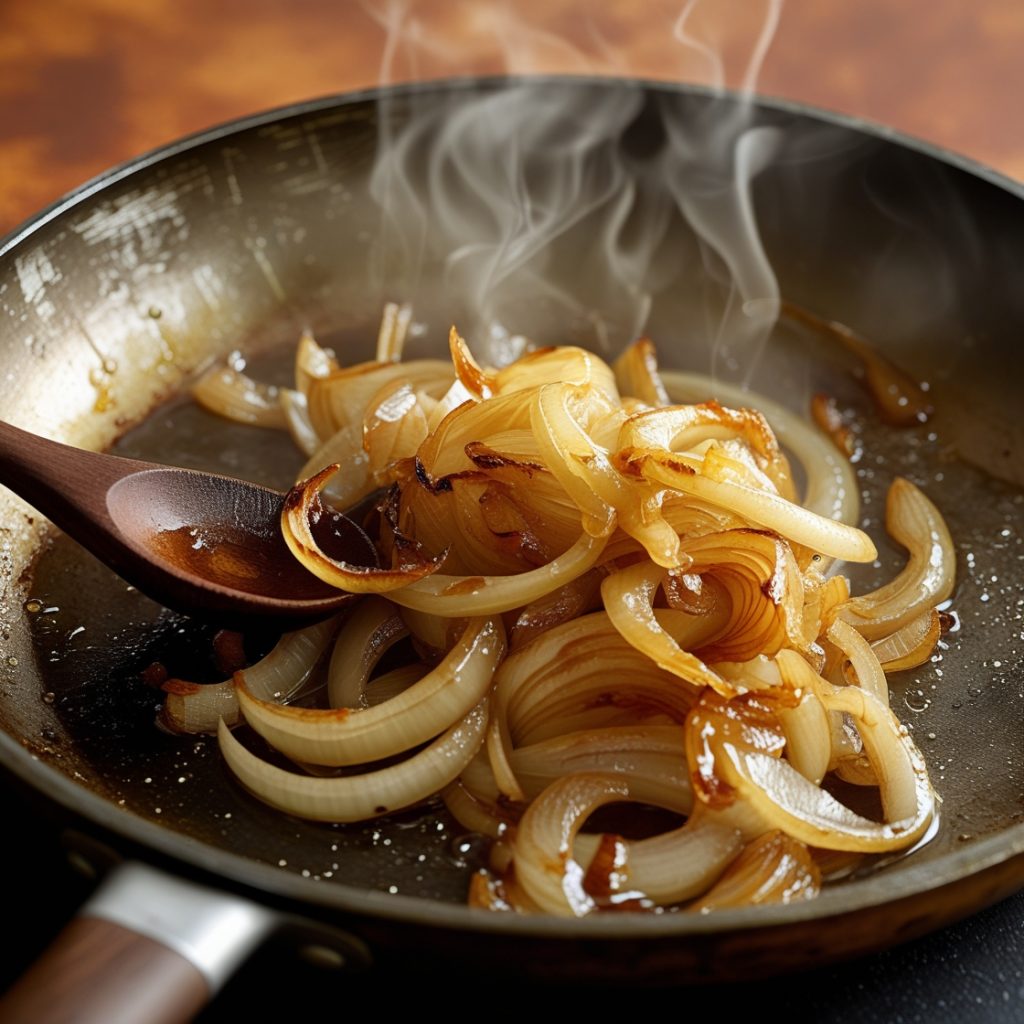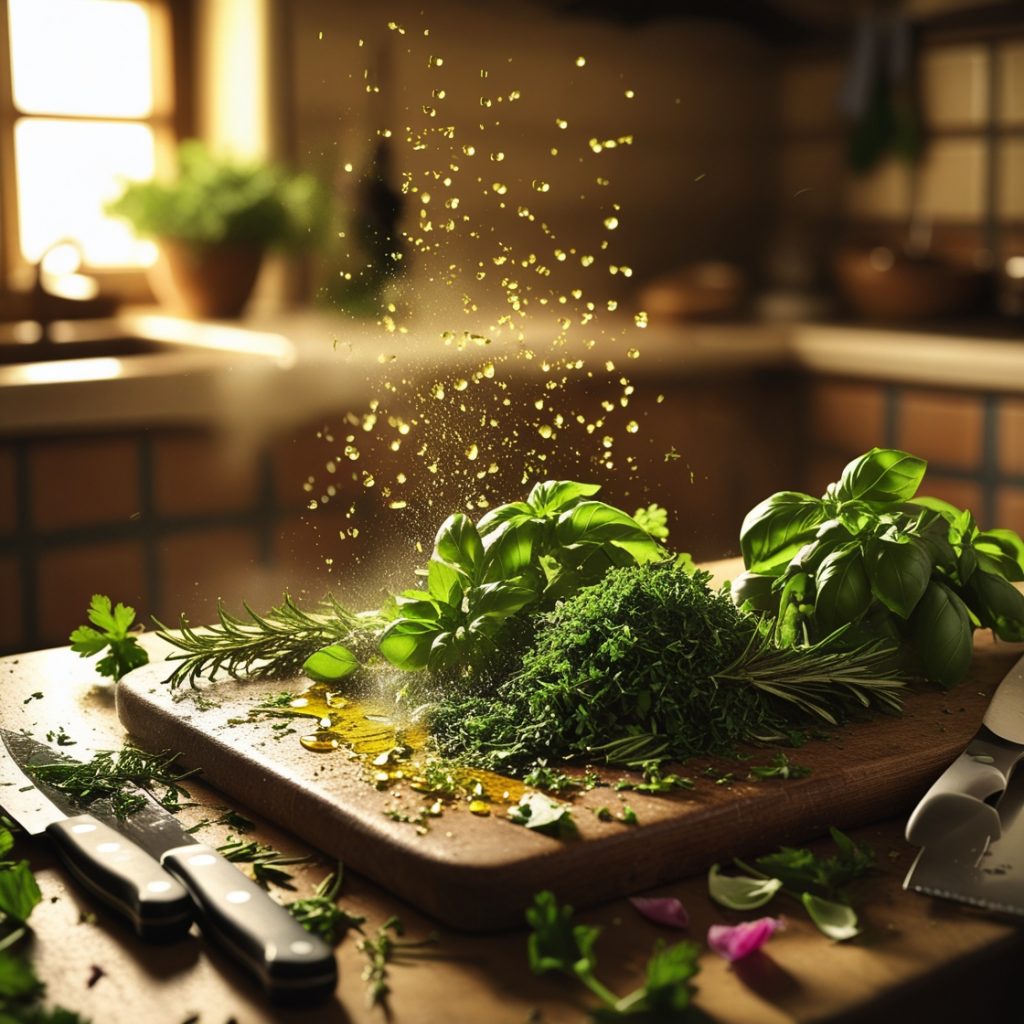Your cart is currently empty!
Author: admin
-

The Joy of Cooking: Simple Ways to Find Happiness in Your Kitchen

This is Part 1 of our “Finding Joy in the Everyday” series, where we explore simple activities that can brighten your daily life.
There’s something magical about the transformation that happens in a kitchen. Raw ingredients become nourishing meals, simple actions become meditative rituals, and the ordinary act of feeding ourselves becomes an expression of care and creativity. If you’ve ever felt a sense of calm while stirring a pot of soup or experienced pure joy when pulling fresh cookies from the oven, you’ve tapped into one of life’s most accessible sources of happiness.
Cooking offers a unique combination of creativity, mindfulness, and immediate gratification that few other activities can match. Unlike many hobbies that require expensive equipment or extensive training, cooking welcomes everyone—from complete beginners to seasoned home chefs—and rewards even the smallest efforts with tangible, delicious results.
Why Cooking Makes Us Happy: The Science Behind Kitchen Joy
Before we dive into practical tips, it’s worth understanding why cooking has such a powerful effect on our mood and well-being. When we cook, we engage multiple senses simultaneously—the sizzle of onions in a pan, the vibrant colors of fresh vegetables, the satisfying weight of kneading bread dough. This multi-sensory engagement naturally pulls us into the present moment, creating a form of active meditation.
The act of cooking also triggers our brain’s reward system. Each step in a recipe provides small accomplishments that release dopamine, the neurotransmitter associated with pleasure and motivation. Chopping vegetables, watching them soften in the pan, tasting and adjusting seasoning—each action offers immediate feedback and a sense of progress toward a delicious goal.
Perhaps most importantly, cooking connects us to fundamental human needs and experiences. Throughout history, preparing food has been central to community, comfort, and celebration. When we cook, we’re participating in an ancient ritual that connects us to our ancestors, our culture, and our most basic need for nourishment.

Creating Mindful Cooking Practices
The key to finding happiness in cooking lies not just in the end result, but in being fully present during the process. Mindful cooking transforms routine meal preparation into a form of active meditation that calms the mind and refreshes the spirit.
Start by putting away distractions—phones, tablets, even background music if it pulls your attention away from the task at hand. Instead, focus on the immediate sensory experience. Notice the sound of your knife on the cutting board, the way herbs release their fragrance when chopped, the satisfying transformation as ingredients combine and cook.
Pay attention to textures, temperatures, and aromas as you work. Feel the smoothness of an onion’s surface before you slice it, notice how garlic changes from sharp to mellow as it cooks, observe the way steam rises from a pot of simmering broth. These small moments of attention create pockets of peace in busy days and help develop a deeper appreciation for the ingredients you’re working with.
Even simple tasks become pleasurable when approached mindfully. Washing dishes can become a warm, sudsy meditation. Organizing ingredients before cooking—what chefs call “mise en place”—creates order and intention that carries through the entire cooking process.

Simple Recipes That Boost Your Mood
Some foods seem designed to lift spirits and comfort souls. While the specific dishes vary across cultures, the common thread is often warmth, richness, and familiar flavors that evoke positive memories and feelings of safety and care.
Aromatherapy Cooking offers an immediate mood boost through scent alone. Sautéing garlic and onions fills your kitchen with an aroma that signals home and nourishment to most people. Baking bread, simmering soup with fresh herbs, or brewing a pot of coffee creates an atmosphere of warmth and comfort that extends far beyond the meal itself.
Comfort Classics don’t need to be complicated to be effective. A simple grilled cheese sandwich made with attention and care can be more satisfying than an elaborate dish prepared hastily. The key is choosing recipes that feel nurturing rather than stressful. Think slow-cooked oatmeal with cinnamon, homemade pasta with butter and parmesan, or a hearty vegetable soup that simmers while you go about your day.
One-Pot Wonders reduce cleanup stress while maximizing flavor development. Dishes like risotto, curry, or braised chicken thighs allow you to focus on stirring, tasting, and adjusting rather than juggling multiple pans and timing constraints. These recipes often improve with time and attention, rewarding patience with deeper, more complex flavors.

Building Kitchen Confidence for Beginners
If cooking feels intimidating rather than joyful, you’re not alone. Many people avoid the kitchen because they fear failure, don’t know where to start, or have had disappointing experiences in the past. The good news is that cooking confidence builds quickly with practice, and even beginners can experience the happiness that comes from creating something delicious.
Start with techniques, not recipes. Learning to properly sauté vegetables, cook pasta al dente, or scramble eggs to creamy perfection gives you foundational skills that apply to countless dishes. Master these basics, and you’ll feel more confident improvising and adapting recipes to your taste.
Embrace imperfection as part of the process. Even experienced cooks burn garlic occasionally or oversalt a dish. These moments aren’t failures—they’re learning opportunities that help you develop better instincts and problem-solving skills. Keep backup ingredients on hand, taste frequently, and remember that most cooking mistakes can be fixed or at least minimized.
Choose recipes with room for error. Soups, stews, and braised dishes are forgiving because they develop flavor over time and can be adjusted throughout the cooking process. Avoid temperamental dishes like soufflés or perfectly timed stir-fries until you’ve built more confidence with easier preparations.

The Sweet Side of Kitchen Happiness
There’s something uniquely joyful about baking and creating sweet treats. Perhaps it’s the precision required, the anticipation as aromas fill the house, or simply the childlike pleasure of eating something homemade and delicious. Baking offers its own form of kitchen therapy, with the added bonus of creating treats that can be shared with others.
Weekend Baking Rituals create something to anticipate during busy weeks. Saturday morning pancakes, Sunday afternoon cookies, or evening bread-making sessions provide structure and comfort to weekend routines. The timing required for baking also creates natural breaks in the day—moments to sit with a cup of tea while cookies bake or bread rises.
Simple Sweet Treats don’t require pastry chef skills to bring happiness. Chocolate chip cookies from a trusted recipe, banana bread made from overripe fruit that might otherwise go to waste, or homemade granola that fills the house with the scent of toasted oats and honey all offer satisfaction disproportionate to their difficulty level.
Even buying high-quality chocolate, specialty teas, or artisanal honey to keep on hand creates opportunities for small daily indulgences. The key is treating these items as special rather than taking them for granted—savoring a piece of really good dark chocolate rather than mindlessly snacking can provide genuine moments of pleasure and appreciation.
Creating Cooking Rituals That Anchor Your Days
The most sustainable cooking happiness comes from creating small rituals that fit naturally into your routine rather than elaborate projects that require special occasions or significant time investments.
Morning Coffee Ceremonies transform the necessity of caffeine into a moment of intention and self-care. Whether you prefer French press, pour-over, or simply taking time to really taste and appreciate your first cup, creating a mindful start to your day through a beloved beverage sets a positive tone for everything that follows.
Weekly Food Prep Sessions can become meditative rather than chore-like when approached with the right mindset. Put on music or a favorite podcast, gather all your ingredients and containers, and spend an hour or two preparing components for the week ahead. The satisfaction of opening a well-stocked refrigerator throughout the week extends the happiness of the cooking session into daily life.
Trying One New Thing Weekly keeps cooking interesting without overwhelming your schedule or budget. This might be a new spice, a vegetable you’ve never cooked before, or a simple technique you’ve been curious about. The goal isn’t perfection but exploration and the small thrill of learning something new.
Try This Week: The 15-Minute Happiness Meal
Choose one meal this week to prepare with complete attention and care, even if it’s something simple. Turn off distractions, gather your ingredients mindfully, and focus entirely on the process of cooking. Notice how the experience differs from hurried meal preparation, and pay attention to how the food tastes when prepared with intention and presence.
Quick Win: The Two-Minute Morning Ritual
Tomorrow morning, instead of rushing through your coffee or tea preparation, spend two minutes being fully present with the process. Notice the sound of water boiling, the aroma as it steeps or brews, the warmth of the cup in your hands. This tiny ritual can shift your entire morning from reactive to intentional.
Going Deeper: Building Your Kitchen Happiness
If this post has inspired you to explore cooking as a source of daily joy, consider investing in a few quality basic tools that make cooking more pleasant: a sharp knife, a heavy-bottomed pan, and a wooden cutting board. Quality tools don’t have to be expensive, but they should feel good in your hands and perform their functions well.
Start a simple recipe collection of dishes that consistently bring you joy—not because they’re impressive or Instagram-worthy, but because they nourish your body and lift your spirits. These might be family recipes that carry emotional significance, simple combinations you’ve discovered through experimentation, or adapted versions of restaurant dishes that make you feel like you’re treating yourself at home.
The kitchen offers one of life’s most reliable sources of happiness because it combines creativity, nourishment, and care in ways that benefit both ourselves and the people we feed. Every time you cook with attention and intention, you’re not just preparing food—you’re creating moments of peace, satisfaction, and joy that extend far beyond the meal itself.
Next week, we’ll explore how small changes to your living space can create big improvements in your daily happiness. Until then, may your kitchen adventures bring you exactly the kind of simple joy that makes ordinary days feel special.
-
Finding Joy in the Everyday: Small Things That Spark Happiness
Happiness doesn’t always come from grand gestures or life-changing events. More often than not, it emerges from the small, intentional choices we make each day. The beauty of cultivating joy lies in how accessible it can be—you don’t need a big budget, extensive planning, or perfect circumstances. Sometimes, the most profound moments of contentment come from the simplest activities.
The Kitchen as Your Happy Place
There’s something deeply satisfying about creating something delicious with your own hands. Cooking transforms raw ingredients into comfort, nourishment, and joy. Whether you’re trying a new recipe that fills your home with incredible aromas or perfecting a family favorite, the act of cooking engages all your senses and grounds you in the present moment.Even the simplest culinary moments can brighten your day. Making your morning coffee just the way you like it, baking cookies that fill the house with warmth, or treating yourself to a piece of really good chocolate can create pockets of sweetness in ordinary days. The key is being present and appreciating these small indulgences rather than rushing through them.## Creating Beauty in Your SpaceYour living environment has a powerful impact on your mood and well-being. Small improvements to your space can create disproportionate amounts of joy. This doesn’t mean expensive renovations—sometimes it’s as simple as rearranging furniture to catch better light, adding fresh flowers to your table, or finally hanging up that artwork you’ve been meaning to display.Upcycling projects offer a particularly rewarding form of creativity. Taking something worn or forgotten and giving it new life combines resourcefulness with artistry. Whether you’re transforming an old piece of furniture with fresh paint, turning mason jars into planters, or repurposing fabric scraps into something useful, these projects create both beauty and a sense of accomplishment.
Growing Something Green
Gardening connects us to natural rhythms and offers the unique satisfaction of nurturing life. Even if you don’t have a yard, herbs on a windowsill, succulents on a desk, or a small container garden on a balcony can bring nature into your daily routine. There’s something hopeful about planting seeds and watching them grow, and the act of caring for plants provides a gentle, meditative break from busy schedules.The rewards extend beyond the growing process itself. Fresh herbs elevate your cooking, flowers brighten your space, and even the simple act of watering plants can become a mindful ritual that starts or ends your day on a positive note.
Moving Your Body, Lifting Your Spirit
Exercise doesn’t have to mean grueling gym sessions or complicated routines. Movement that brings joy might be dancing to your favorite songs in your living room, taking a walk through your neighborhood while really noticing your surroundings, or stretching while watching the sunrise. The endorphins from physical activity are well-documented mood boosters, but the mental benefits of moving your body go beyond chemistry—there’s freedom in movement and satisfaction in feeling strong and capable.
Exploring Your Own Backyard
Adventure doesn’t require distant destinations. Some of the most delightful discoveries happen close to home when we approach familiar places with fresh eyes. Take a different route on your usual walk, visit a local museum you’ve never been to, try a new hiking trail within driving distance, or explore a neighborhood you typically just drive through. These mini-adventures break routine and remind us that there’s always something new to discover, even in familiar territory.
Creating with Your Hands
There’s something deeply human about making things. Whether you’re knitting, painting, woodworking, or trying your hand at pottery, creative activities offer a respite from digital overwhelm and connect us to the satisfaction of creating something tangible. The process itself is often as rewarding as the result—there’s a meditative quality to repetitive motions like knitting stitches or sanding wood.Don’t worry about perfection or comparing your work to others. The joy comes from the process of learning, experimenting, and seeing your ideas take physical form. Even simple projects like making greeting cards, trying watercolor painting, or building a basic shelf can provide hours of engaging, screen-free happiness.
The Art of Small Rituals
Perhaps the most powerful tool for daily happiness is creating small rituals that anchor positive moments in your routine. This might be savoring your first cup of coffee in silence before the day begins, spending five minutes writing in a gratitude journal, or taking a moment to really taste and appreciate your lunch instead of eating while distracted.These tiny practices work because they create intentional pauses in busy days and train your attention to notice good things that might otherwise pass unnoticed. Over time, these small rituals compound, creating a foundation of contentment that makes you more resilient during challenging periods.
Starting Small, Thinking Big
The beautiful thing about cultivating everyday happiness is that you can start immediately with whatever resources you have available. Pick one small thing that appeals to you—maybe it’s trying a new recipe tonight, rearranging your desk to make it more pleasant, or taking a walk somewhere new this weekend. Notice how it makes you feel, and build from there.Happiness isn’t a destination you arrive at after achieving certain goals or acquiring certain things. It’s a practice, cultivated through small, intentional choices that honor what brings you joy. In a world that often feels chaotic and demanding, these simple pleasures become acts of resistance—gentle reminders that life contains beauty, creativity, and satisfaction in abundance, if we know where to look.The ingredients for a happier life are likely already within reach. Sometimes we just need permission to slow down enough to notice them and the wisdom to understand that small joys, repeated consistently, can transform the entire texture of our days.
-

What is Mental Well-Being? A Beginner’s Guide
Mental well-being is a term we hear often, but what does it really mean? In a world where stress, anxiety, and burnout are increasingly common, understanding and prioritizing mental well-being is more important than ever. This guide will break down what mental well-being is, why it matters, and how you can take steps to nurture it in your daily life.
What is Mental Well-Being?
Mental well-being refers to the state of your emotional, psychological, and social health. It’s about how you think, feel, and behave in your day-to-day life. Good mental well-being doesn’t mean you’re always happy or free from challenges. Instead, it means you have the tools and resilience to cope with life’s ups and downs, maintain healthy relationships, and feel a sense of purpose and fulfillment.
Key aspects of mental well-being include:
- Emotional Balance: Being able to manage your emotions, whether positive or negative, in a healthy way.
- Resilience: Bouncing back from setbacks and adapting to change.
- Self-Esteem: Having a positive view of yourself and your abilities.
- Healthy Relationships: Building and maintaining meaningful connections with others.
- Purpose and Fulfillment: Feeling that your life has meaning and direction.
Why is Mental Well-Being Important?
Mental well-being is just as important as physical health. It affects how you:
- Handle stress and challenges.
- Make decisions and solve problems.
- Build and maintain relationships.
- Contribute to your community and pursue your goals.
Poor mental well-being can lead to issues like anxiety, depression, and burnout, while good mental well-being can enhance your overall quality of life, boost productivity, and improve physical health.

Signs of Good Mental Well-Being
How do you know if you’re in a good place mentally? Here are some signs:
- You feel confident and capable of handling life’s challenges.
- You have a sense of purpose and direction.
- You maintain healthy relationships and communicate effectively.
- You can manage stress without feeling overwhelmed.
- You feel generally content and at peace with yourself.
How to Improve Your Mental Well-Being
Improving mental well being is a journey, and small, consistent steps can make a big difference. Here are some practical tips to get started:
- Practice Self-Care
- Prioritize activities that make you feel good, whether it’s reading, exercising, or spending time in nature.
- Get enough sleep, eat nutritious meals, and stay hydrated.
- Stay Connected
- Build and maintain strong relationships with friends, family, and community members.
- Don’t hesitate to reach out for support when you need it.
- Manage Stress
- Identify your stress triggers and develop healthy coping mechanisms, such as deep breathing, meditation, or journaling.
- Set boundaries to protect your time and energy.
- Stay Active
- Regular physical activity releases endorphins, which boost mood and reduce stress.
- Even a short walk can make a difference.
- Practice Mindfulness
- Focus on the present moment through mindfulness exercises like meditation or mindful breathing.
- This can help reduce anxiety and improve emotional regulation.
- Seek Professional Help When Needed
- If you’re struggling, don’t hesitate to reach out to a therapist or counselor.
- Therapy can provide tools and strategies to improve your mental well-being.
Breaking the Stigma
One of the biggest barriers to mental well-being is the stigma surrounding mental health. Many people feel ashamed or embarrassed to talk about their struggles, but mental health is just as important as physical health. By openly discussing mental well-being, we can create a more supportive and understanding society.

Final Thoughts
Mental well-being is not a destination but an ongoing process. It’s about taking small, intentional steps to care for your mind and emotions, just as you would for your body. By understanding what mental well-being is and how to nurture it, you can build a healthier, happier, and more fulfilling life.
Remember, it’s okay to ask for help, and it’s okay to take things one day at a time. Your mental well-being matters, and investing in it is one of the best things you can do for yourself.